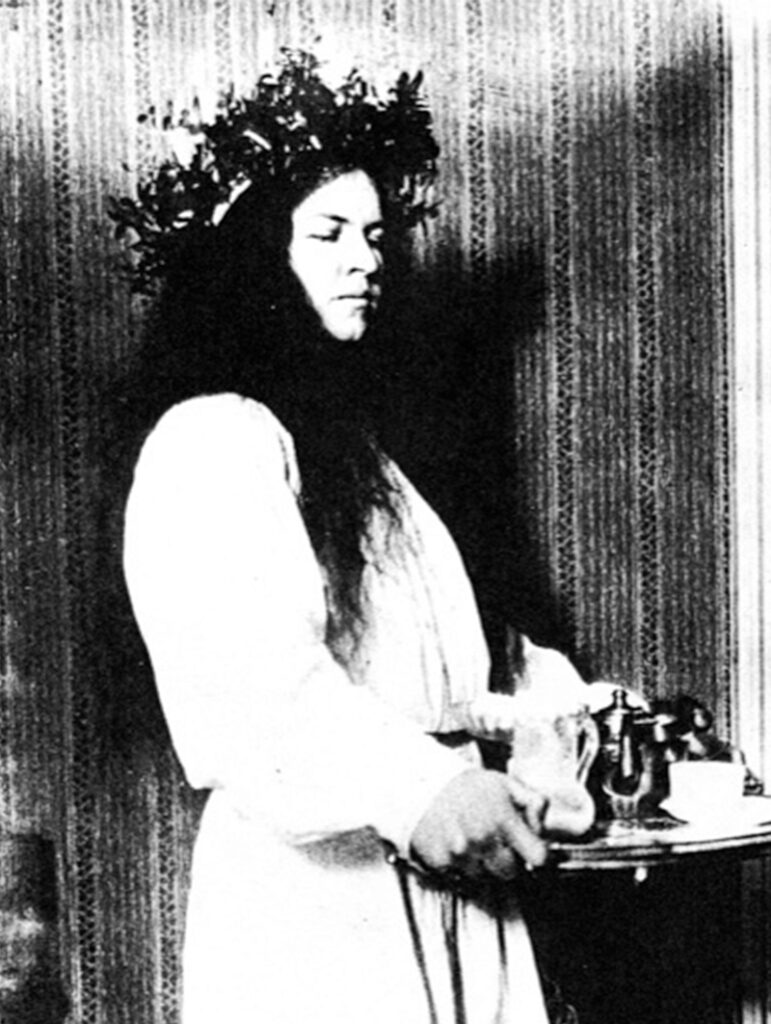
How I imagine Tove Jansson. On writing the biography for this site

Welcome to tovejansson.com – the newly launched site presenting Tove Jansson’s lifes work in a scope never before seen online. Visit this page for news related to Tove Jansson – books, theatre plays, movies or different kinds of events – in-depth articles about her life and art and interesting pearls from the archives. First out is Hanna Ylöstalo, the author who has written the biography for the site.
I was asked to write about Tove Jansson’s life for the new website tovejansson.com. Of course I wanted to! But could I?
When faced with the life’s work of Tove Jansson I feel very small. About as small as the child in The Stone who rolls a large rock home in Sculptor’s Daughter. Convinced that the rock is filled with silver, the girl struggles with it, first along the street, then up the stairs. The rock is about as big as the child herself. As she approaches her front door, several flights up, the rock tumbles from the balcony like a meteor – all that work for nothing, and all that silver lost!
Of course I wanted to write a biography of Tove Jansson! But could I? I don’t have a doctoral thesis under my belt, nor a personal relationship with her. We never met and I don’t have a Moomin figure tattooed anywhere on my person. And yet, my relationship with her books is an intimate one, as is so often the case with our most cherished authors.
Of course I wanted to write a biography of Tove Jansson! But could I?
Long ago I was very happy to receive The Summer Book as a gift from my grandma. She wasn’t exactly the bohemian artist type – quite the opposite. She was a hardworking bookkeeper at K. Hartwall and married to a lorry driver. In 1996, the same year that Tove Jansson and Tuulikki Pietilä published Notes from an Island about their beloved islet in the Pellinge archipelago, my grandparents bought a fisherman’s hut in those islands. The fisherman had displayed the motors from his boats by the dining table inside. Every summer from the age of four, I heard the same stories about Tove Jansson on the island, and she became such an everyday character in my mind that she may as well have really been living and working close by.

It is important to have role models that feel close. When I was asked to write a biographical text on Tove Jansson I saw it as a sign to sit down and re-read her literary canon. I had a great deal of help from biographies, books, research papers, lectures, essays and interviews about Tove Jansson. By absorbing as much as possible from other people’s perspectives, I have broadened my own.
The problem with being anchored in my own time is that I have no choice but to view the mind of a 30-year-old Tove Jansson with knowledge of what happened later in her life. As I wrote my text after Tove Jansson’s death, I had no choice but to view the mind of a 30-year-old Tove with a knowledge of what happened later in her life. There was constant commenting, analysis and judgement. All my information came from elsewhere, but when I sat down to write about Tove Jansson I was determined to do so from personal experience.
What does that matter, if I’m not living a life I myself consider dignified?
After all, I had been given an entirely unique opportunity: to attempt to capture her voice and time. As the biographical text was in the present tense, I often thought of myself as a time traveller, hanging out with Tove Jansson in her own time. I have imagined everything she said in her letters to be directed to me personally as her friend. I have read her stories as though she were telling them to me alone, as though she were communicating secret messages solely for my benefit, messages that perhaps no one but me understood.
Other than Tove Jansson’s works and direct interviews with her, my principal guide were the letters published in Letters from Tove. I returned to these time and time again to be reminded of the chronology of events, and of her words and emotions. When she described her feelings on approaching 30, I recognised myself: “What does that matter, if I’m not living a life I myself consider dignified?” (in a letter to Eva Konikoff, 3.12.1941, quoted in Letters from Tove Jansson.)
She notes that time is short, the choices are many, there are glimpses of loneliness, and it becomes more and more difficult to stay true to your beliefs.
It is strange, because people who can write and capture life like Tove Jansson have an ability to explain existence in such a human way that everything seems to fall into place. She doesn’t do this in every text or every picture; she doesn’t do it all the time. But when she does, it is beautiful. And I feel I understand her like a friend.
Hanna Ylöstalo is an author and editor at Förlaget, which publishes Tove Jansson’s books in their original language, Swedish.













